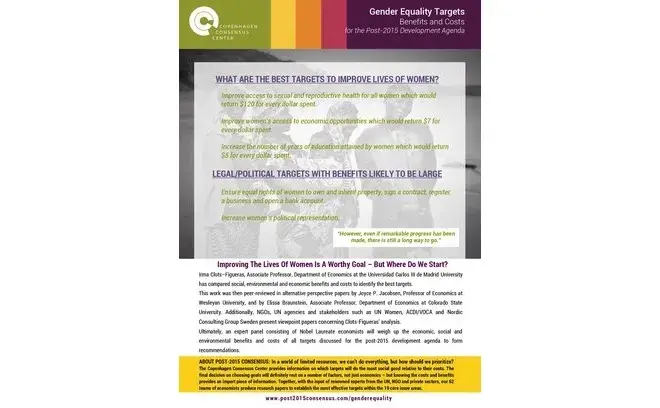Gender Equality
Within Gender Equality, there are three issues that should be perceived as pre-conditions in order to achieve gender equality.
- Improve access to sexual and reproductive health for all women. Women should be able to decide whether and when to have children in order to fulfill their potential. According to Kohler and Behrman 2014 this target would return $120 for every dollar spent.
- Increase the number of years of education attained by women. Education for women has other benefits that should be computed when talking about benefit-cost-ratios (BCRs), such as the delay of early fertility and child marriage. Programs increasing the number of years of education and increasing the age at marriage can return $5 for every dollar spent.
- Ensure equal rights of women to own and inherit property, sign a contract, register a business and open a bank account. Even if a BCR cannot be provided, making sure women and men have the same rights in all countries is not very costly and can have very large benefits.
There is another issue with a high BCR that would be crucial to achieving gender equality and would also help prevent issues such as child marriage and violence against women.
- Improve women’s access to economic opportunities. Programs improving income-generating activities for women can return $7 dollars for every dollar spent.
There is an issue for which a BCR cannot be provided but that just requires a change in the countries’ electoral laws and can potentially have very large benefits:
- Increase women’s political representation. Making sure women have political representation can have very large benefits in countries in which women are underrepresented in policy making. Quotas should be encouraged.
Finally, there are two issues for which we do not have enough evidence coming from development programs specifically designed to tackle them to claim that they have sufficiently high BCRs. Programs targeted to these issues could potentially be very expensive, and we still do not know how successful they would be. Thus, given that these activities are widespread, it is impractical to reduce these behaviors to a target of zero.
- Reduce violence against girls and women. Programs designed to empower girls or to give them economic opportunities will probably reduce violence against women, but not all studies support this finding. More evidence is needed on the BCRs of programs successful at reducing violence against women. However, a target of zero is impractical.
- Reduce child marriage. Programs aimed at increasing the number of years of education for girls will most probably reduce child marriage, given the fact that many girls drop out from school when they get married. The recommendation is to focus on those programs. But a target of zero is also impractical.
Scroll down to read our series of reports examining gender equality targets for the post-2015 development agenda, written by leading economists and experts.
Assessment Paper
Irma Clots-Figueras, Associate Professor of Economics at Carlos III Madrid University, makes a strong case that gender equality targets are not just about rights – they also make economic sense. She argues that ensuring reproductive health, economic and legal rights, educating girls and increasing representation in political spheres are valuable post-2015 goals. However, Clots-Figueras also cautions against the inclusion of violence and child marriage targets - not because they are unimportant, but because there is limited evidence of how to effectively achieve them directly.
…the policy recommended to reduce crimes against women would be to focus more on programs that provide empowerment, education, and economic opportunities...”
- Irma Clots-Figueras
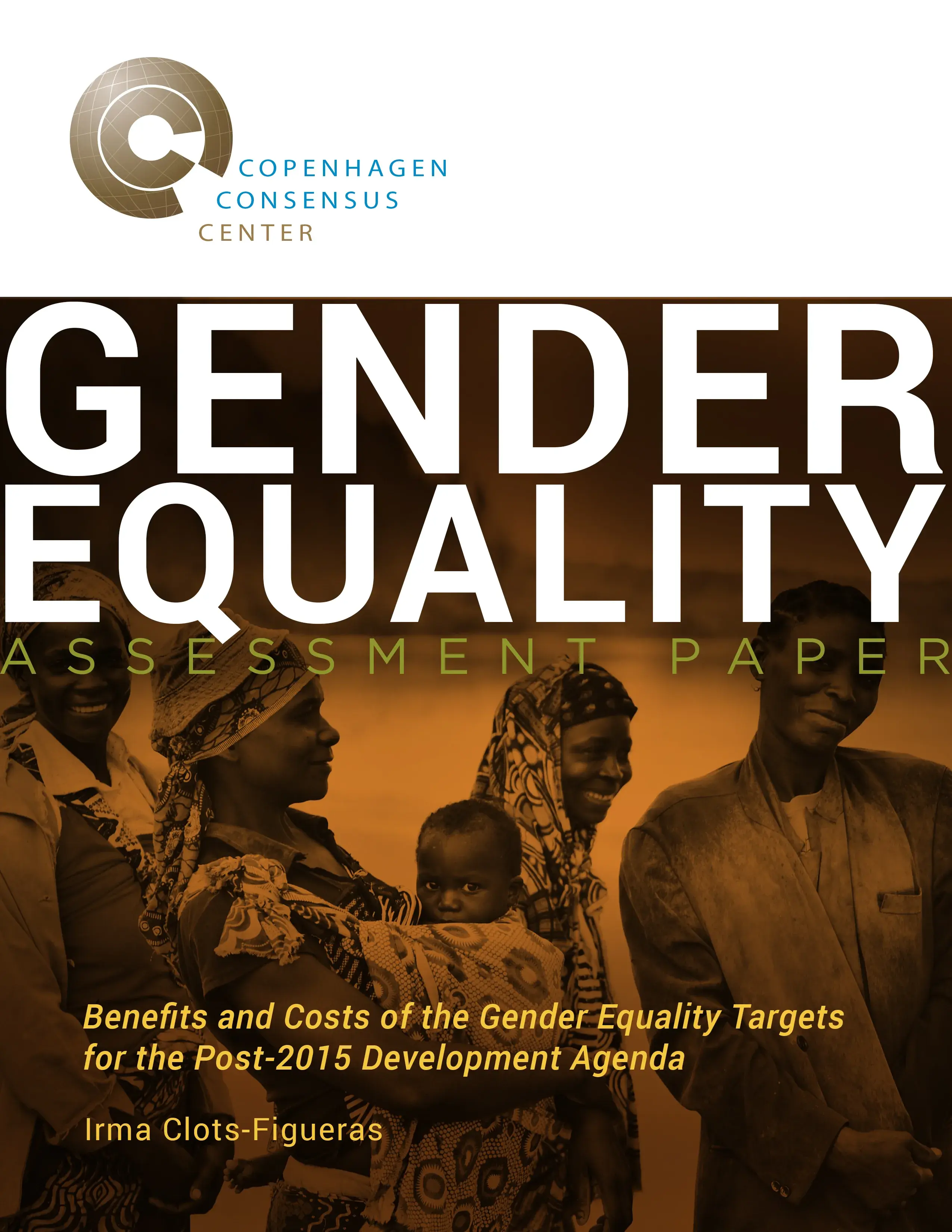
Perspective Paper
Elissa Braunstein, Associate Professor of Economics at Colorado State University focuses on two critiques in her perspective paper: the pitfalls of cost-benefit analysis methodology in gender policy, and the sole reliance on experimental evidence from small-scale trials to calculate benefit-cost ratios. On the former, Braunstein notes for example, that market prices may have in-built gender biases that need to be accounted for. On the second issue, Braunstein suggests that one should not ignore the large body of evidence on the relationship between gender equality and the macro-economy.
When evaluating the benefits and costs of gender equality goals, it is important to engage with this influential macro-oriented literature.”
- Elissa Braunstein
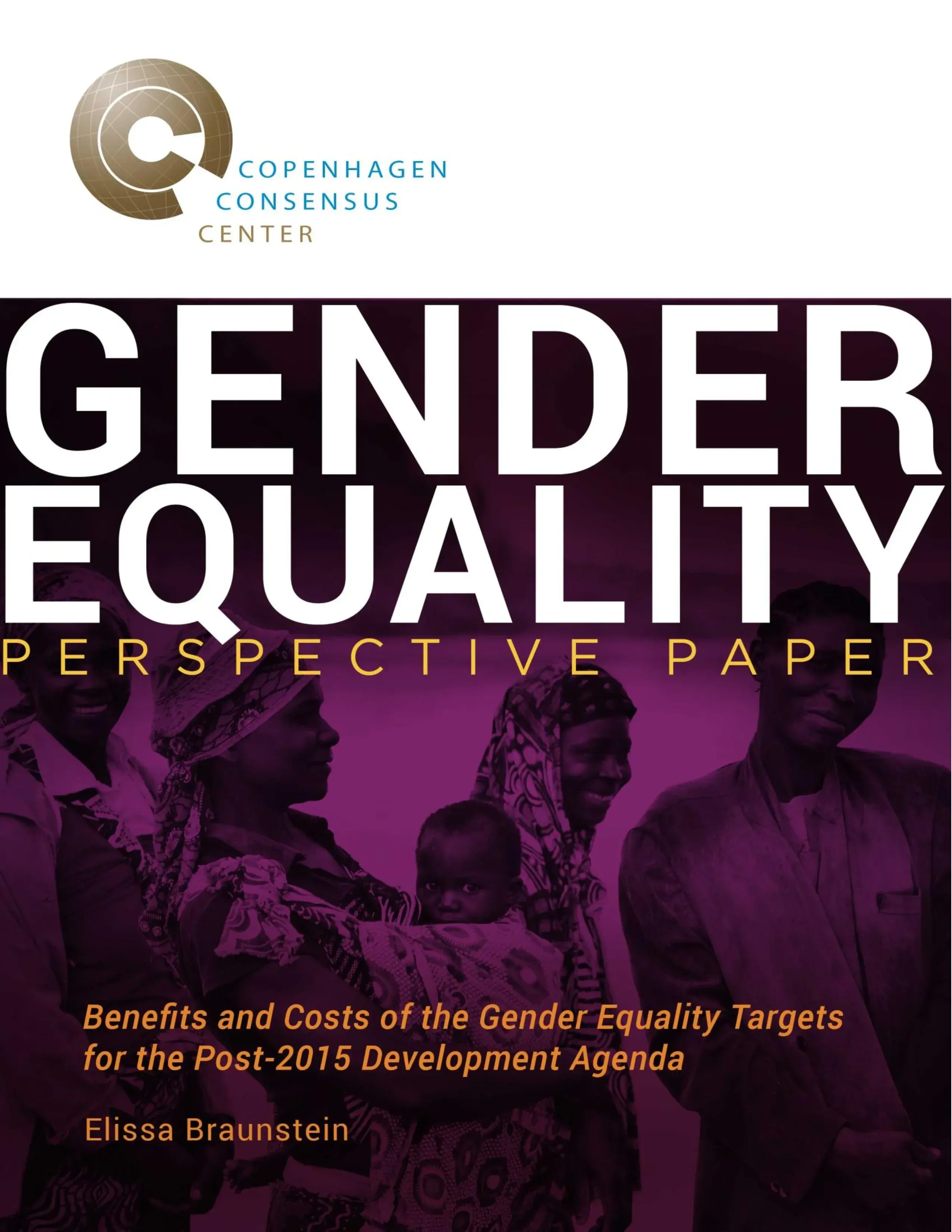
Perspective Paper
Joyce P. Jacobsen, Professor of Economics at Wesleyan University, applauds Clots-Figueras’ effort in analyzing costs and benefits of gender-equality targets. However, like Braunstein she is concerned about the author’s over-focus on micro-level data and offers examples of how a ‘macro-level’ benefit-cost analysis could be conducted. Jacobsen also discusses various issues of a philosophical nature such as causation versus correlation in gender studies, and the limits of positive analysis.
Positive economic analysis is, other than in highly circumscribed cases, unable to justify actions/changes based on BCR analysis without falling back on normative grounds.”
- Joyce P. Jacobsen
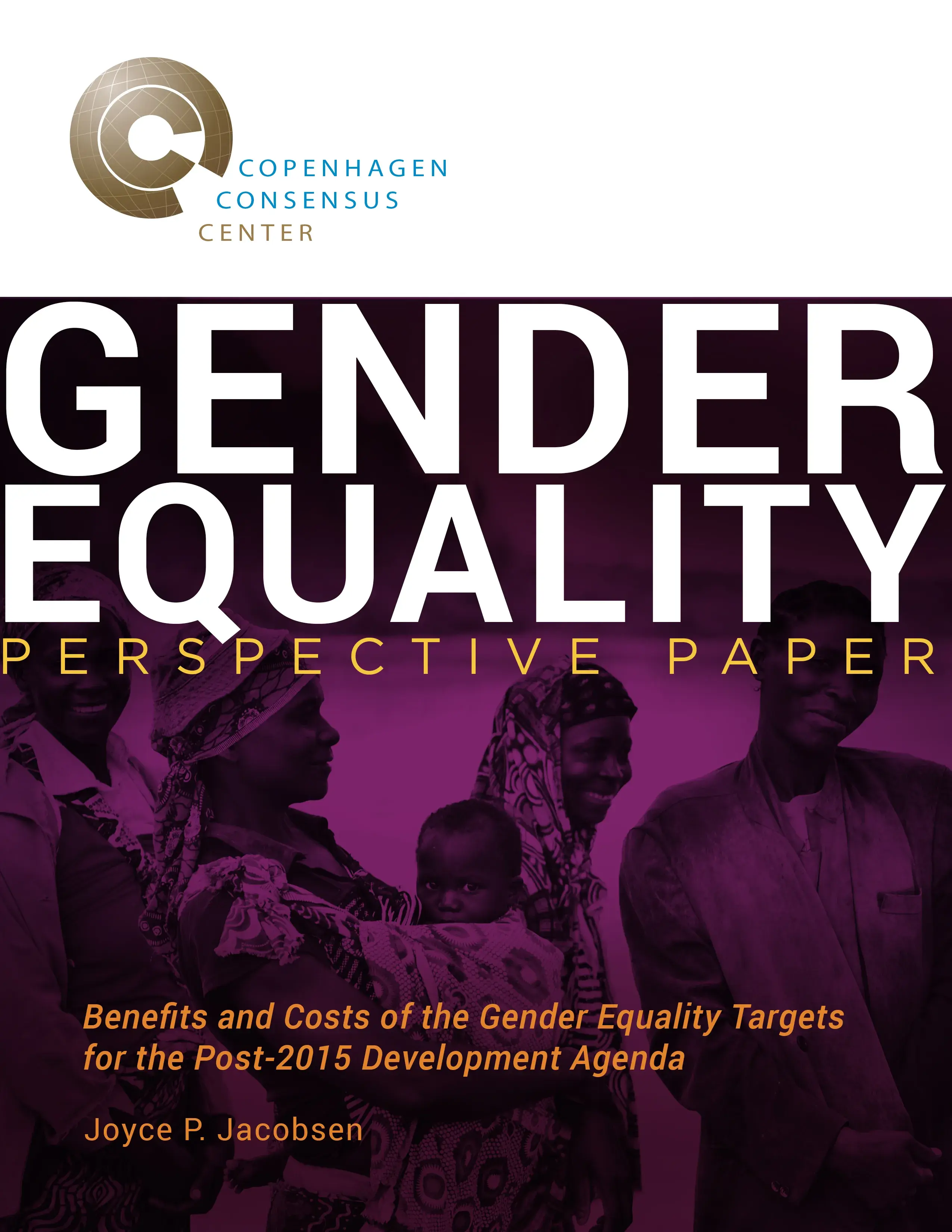
Viewpoint Paper
The viewpoint paper written by Lindsey Jones, Director, Gender Mainstreaming and Women’s Empowerment at ACDI/VOCA commends the work of Clots-Figueras for its solid evidence based examination of targets related to gender equality. However, the paper points to a number of issues that were not sufficiently addressed within the assessment paper. Jones lays out ACDI/VOCA’s recommendations for post-2015 gender equality targets.
Clots-Figueras makes a strong and solid case for the adoption of targets related to the following issues: equal right of women to own and inherit property, reproductive and maternal health, working conditions and labor force participation, and educational goals at secondary and tertiary levels."
- Lindsey Jones
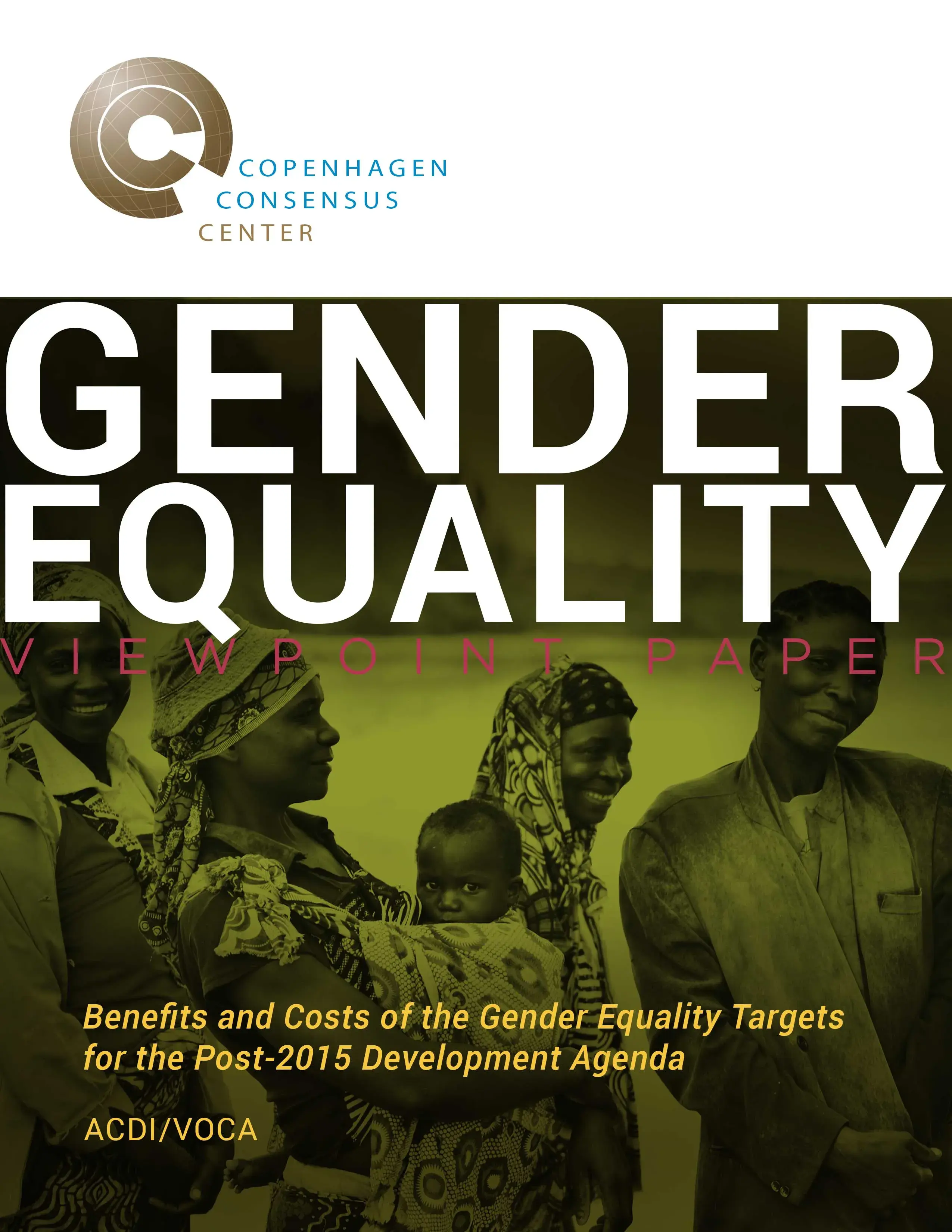
Viewpoint Paper
The viewpoint of Anja Taarup Nordlund, Sr. Gender Consultant at Nordic Consulting Group Sweden, values the input of a benefit-cost anaylsis in the debate of gender equality targets for the post-2015 development agenda. However, Nordlund states that while economics is important it cannot alone determine gender equalilty targets, and issues such as human rights must be included within the debate. Nordlund instead focuses this viewpoint paper on a discussion of what kind of gender results the post-2015 development agenda should achieve.
If we want to improve the gender perspective of the MDGs’ successor, the Sustainable Development Goals (SDGs), I believe it to be imperative to work with many perspectives. "
- Anja Taarup Nordlund
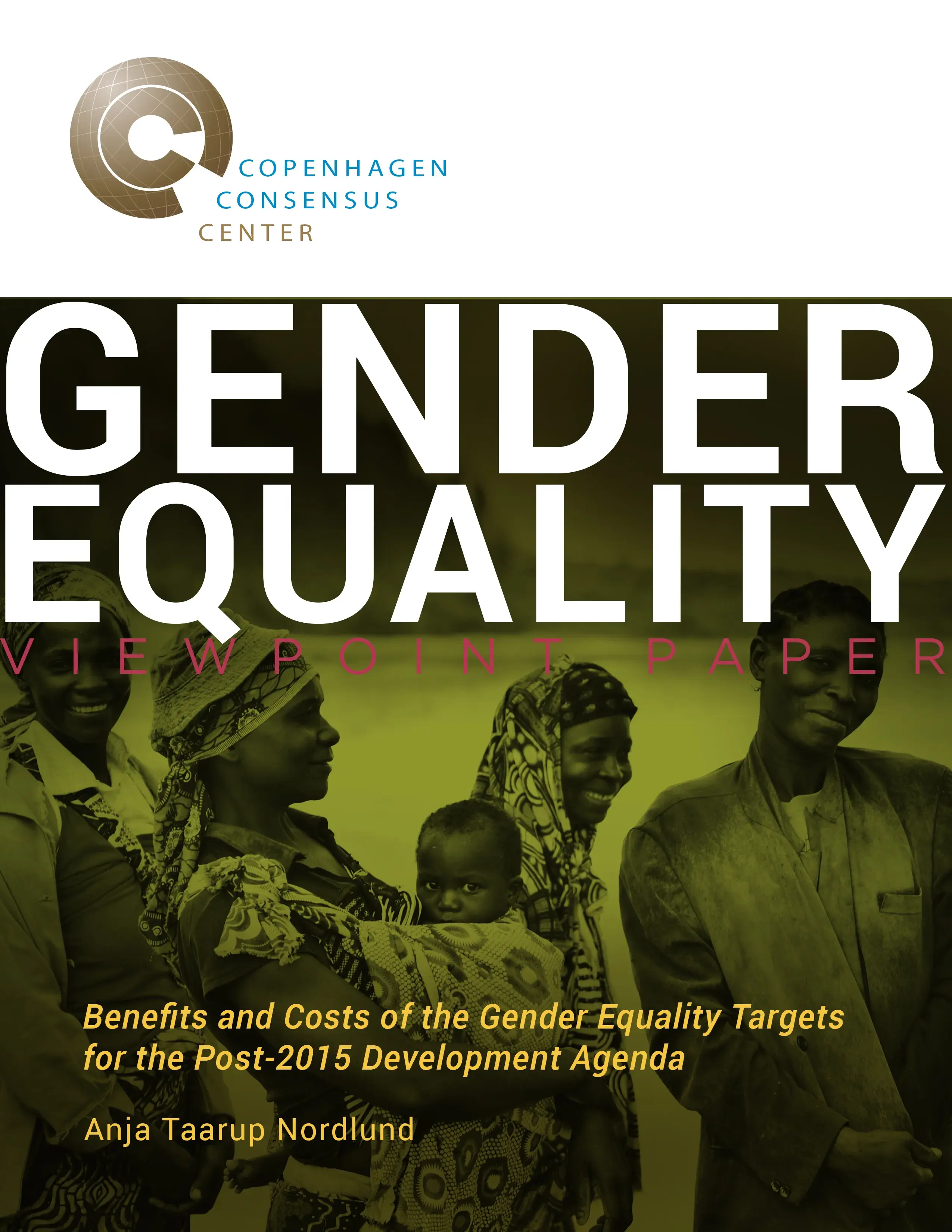
Viewpoint Paper
The viewpoint written by Almas Jiwani, President, UN Women National Committee Canada, applauds the effort of the assessment paper to inject robust research into the post-2015 debate. However, it notes that of the two targets recommended in the paper, one is more robust than the other.
UN Women National Committee Canada members and I applaud the efforts of the Copenhagen Consensus to deliver robust and timely research in support of the Post-2015 Consensus on the SDGS. ."
- Almas Jiwani
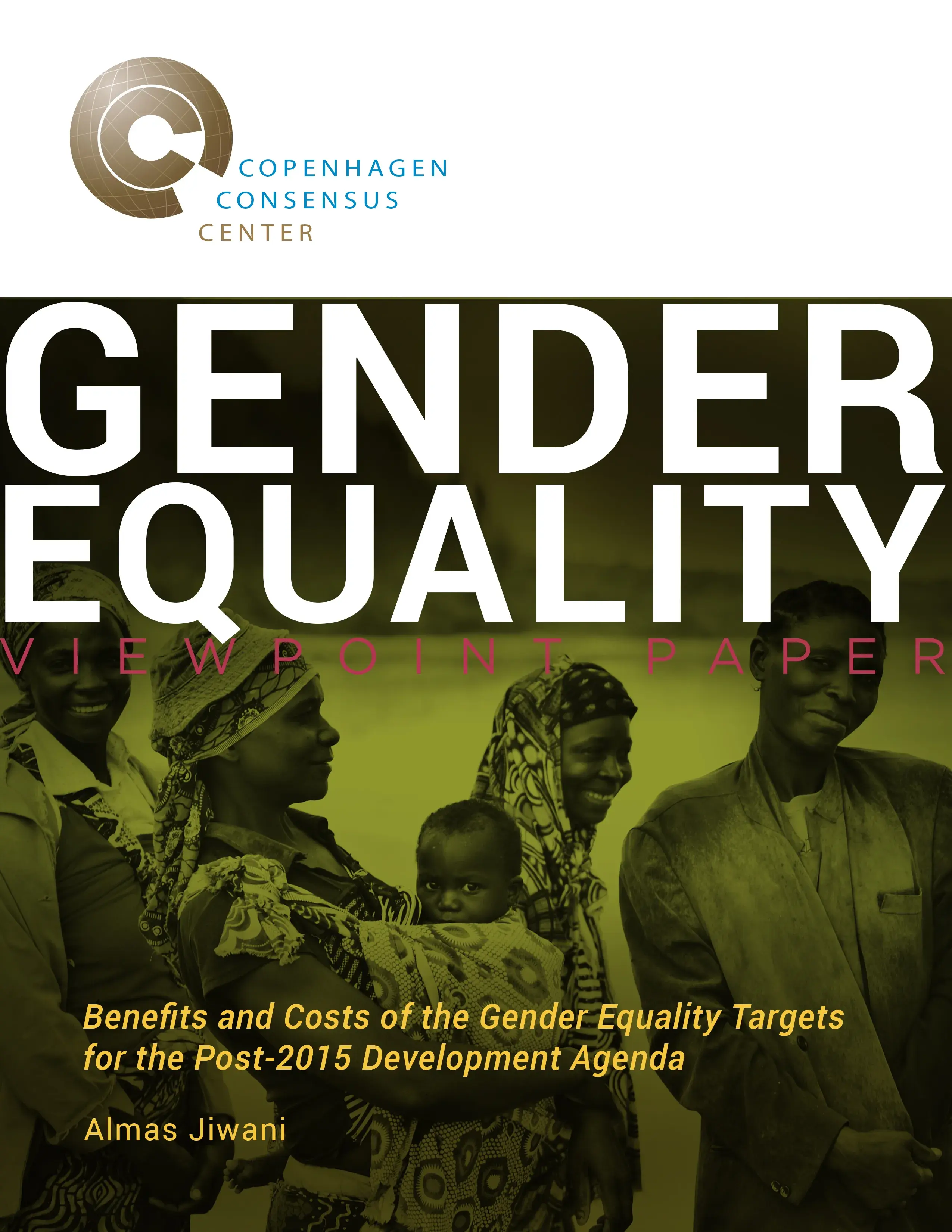
The Post-2015 Consensus project brings together 60 teams of economists with NGOs, international agencies and businesses to identify the targets with the greatest benefit-to-cost ratio for the UN's post-2015 development goals.




